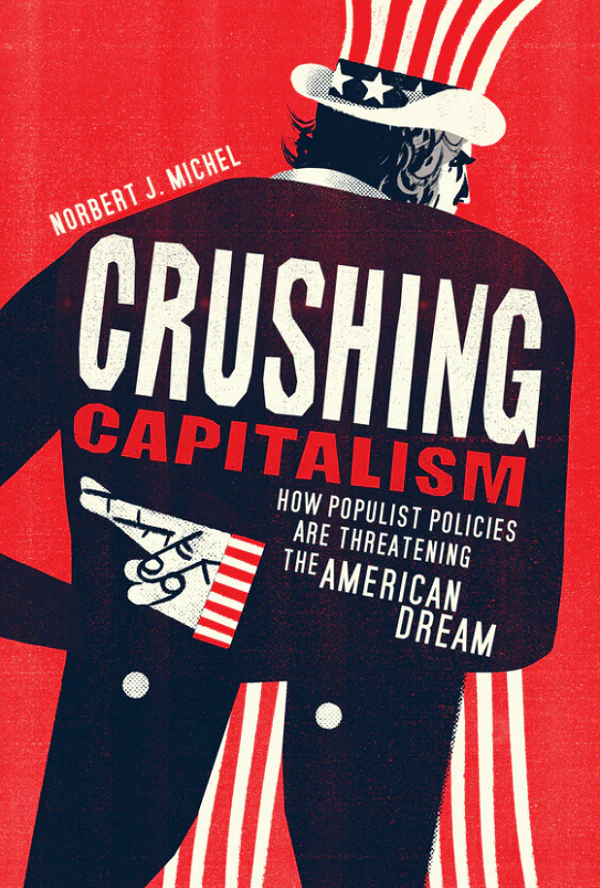[ad_1]
We often hear that the American dream is no longer achievable for a large fraction of Americans. Some of the people who make that claim go on to advocate more government regulation and spending to help restore the dream.
But what if the American dream is alive and well, and what if current government intervention is making it less well than it could be? In his new book, Crushing Capitalism: How Populist Policies Are Threatening the American Dream, Cato Institute economist Norbert J. Michel raises those questions. To answer them, he lays out massive amounts of data that show things are getting better for most Americans, many government interventions slow that improvement, and further government intervention would slow it further. Michel makes his case by thoroughly examining data on wages, household incomes, and poverty, and along the way notes the problems with welfare benefits, minimum wages, and tariffs.
This is from my latest Hoover article, “The Resilient American Dream,” Defining Ideas, June 19, 2025.
Another excerpt:
Have real wages stagnated?
We often hear that there has been almost no growth in real wages in the past few decades. For example, in a 2018 book, Oren Cass, a lawyer who is chief economist at American Compass, stated that between 1975 and 2015, “the median worker’s wages have barely budged.”
Michel notes several problems with Cass’s claim. I’ll highlight two. First, to adjust wages for inflation so that he can compare real wages over time, Cass uses the Consumer Price Index (CPI), which notoriously overstates inflation. A better index, which also overstates inflation but less so, is the Personal Consumption Expenditure (PCE) index. Using this index, Michel shows that between 1975 and 2015, real wages grew by 22 percent, compared to the 1 percent that Cass computed using the CPI. Second, an important component of wages is employer-provided benefits. Between 1973 and 2019, which was the approximate time period that Cass discussed, these nonwage benefits grew from 13 percent of total compensation to 30 percent. In short, real wages, properly measured, have grown by a large percent since 1973.
And:
Household incomes
Another claim we often hear is that household incomes have stagnated. For instance, Brookings Institution economists Isabel Sawhill and Eleanor Krause stated in 2018 that “American households in the middle of the distribution have experienced very little income growth in recent decades.” But Michel points out that between 1967 and 2015, median real household income rose from $44,895 to $57,230. That 27 percent increase is not huge, but it’s better than “very little.” Moreover, Michel points out two “not-little” problems with the Sawhill/Krause data. First, they didn’t adjust for household size, which has declined substantially. Per person, household income rose over that time by 64 percent. And, as with Cass’s comparison of wages, Sawhill and Krause adjusted for inflation by using the CPI. Using the PCE, Michel concludes that between 1967 and 2015, real household income per person rose by 140 percent. That’s a lot.
Read the whole thing.
[ad_2]
Source link











